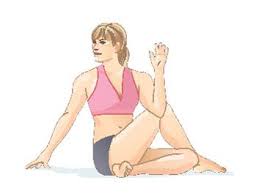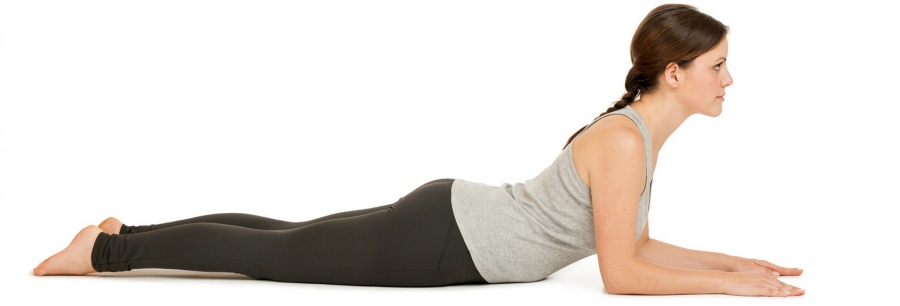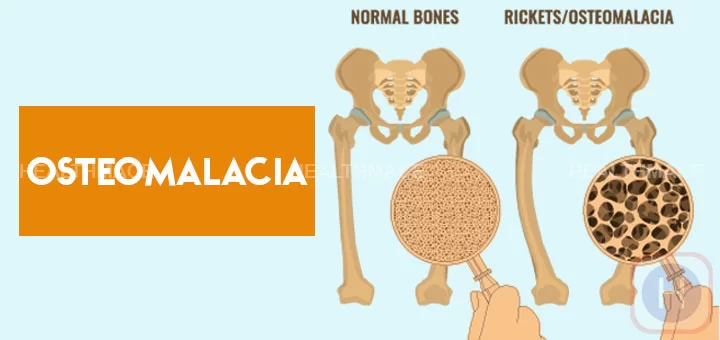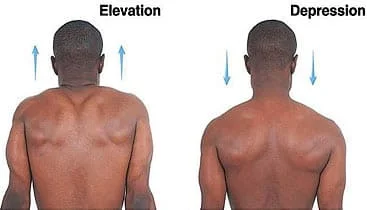Back muscle tightness
Back muscle tightness makes it difficult to bend forward or Backward and makes your day-to-day activity limited, Back Stretching Exercise helps to recover from it.
The back muscles are the main structural support for the trunk (torso). These muscles help you move the body, including the head, neck, shoulders, arms & legs. The back muscles work together to allow you to bend over, twist, turn the head & extend the back. These muscles also help you sit & stand up straight. They play an essential role in supporting the spine & helping you breathe.
The back muscles start just under the skull, extend across the shoulders & down to the lower back just above the hips. These muscles attach to the ribs, vertebrae (bones in the spine), shoulder blades & neck.
The back muscles are divided into three-layer
- The superficial layer
- the intermediate layer
- the Deepest layer of the muscles.
Table of Contents
What can cause Back muscle tightness?
- Some sports training, overtraining muscles, and long sitting times can cause back muscle tightness. Tight hamstrings and gluteus muscles can also lead to tightness of the back muscle. Weak core muscles, poor posture, or incorrect positioning also cause back muscle tightness.
- sedentary lifestyle:- Spending extended periods in positions of poor posture can cause tightness and pain in the lower back.
- ruptured discs or herniated discs: This is a flattening and bulging out or rupturing of the intervertebral discs that sit between the vertebrae.
- invertebrate disc degeneration
- stiff joints of the spine
- muscular disorder
- pinched nerves
- age-related changes in the spine
- Back arthritis: This is an inflammatory condition that affects joints of the body, including the back.
- Back sprain or strain: sprains and strains are the results of tearing or overstretching of ligaments and muscles around the Back.
- obesity
- Skeletal abnormalities: scoliosis, lordosis, and other spinal abnormalities can cause a tight lower back.
What are the symptoms of Back muscle tightness?
- Whether your lower back feels tight often or occasionally, it is important to listen to your body and take steps to loosen the tension in your back. A tight lower back can worsen the condition and lead to more serious problems. It can also affect your daily movements such as forward bending to pick up something from the floor.
- Spasms, pain, and cramping may accompany tightness in your lower back. The pain often feels like a constant, dull ache, and your back may feel tense, stiff, and contracted. You may also feel some tightness in your pelvis, hips, and legs.
- A tight lower back that is caused by an over-strenuous workout or picking up something heavy will usually be felt within a few hours. It is normal to feel tightness or soreness after working out, but it will generally subside within a few days.
- Tightness may be more likely if you are doing a workout you don’t normally do or are not in the proper position. As long as it peaks and subsides within a reasonable time, it should not be cause for concern.
How do you improve back flexibility and strength?
- There are several simple stretches and exercises you can do to improve flexibility and strength in your lower back.
- Focus on lengthening and extending the spine. This relieves compression in the lower back. Stretching of the hamstrings is beneficial. you should choose exercises that work on the hips, core, and gluteal (buttock) muscles.
- Doing daily activities like walking, yoga, or swimming is recommended. Put more dedicated effort into being active as often as possible. Consistently doing exercises and activities to loosen up your lower back will usually provide positive results within a few weeks.
Here are nine exercises you can do in your daily routine to strengthen your back and improve your flexibility of the back.
1. Knee to chest

This stretch helps to loosen your lower back muscles and improve flexibility while stretching and stabilizing the pelvis.
Muscles used:
- gluteus Maximus
- pelvic muscles
- back extensors
- quadriceps muscle
Lie on your back (supine position) with both legs extended.
your right knee towards your chest with your fingers interlaced around your shin.
Hold this position for 5-7 seconds, and then release your leg.
Repeat this stretch 5-7 times on both legs.
Then pull both knees towards your chest and hold your hands, arms, or elbows.
Hold this position for 30 seconds and then repeat.
2. Cat-cow

- This exercise increases the flexibility of the spine and gives an excellent stretch for your hips and abdomen. Pay attention to your core muscles as you contract and release them throughout the movement. If you are feeling mainly stiff or sore, you can do the exercise super slowly and gently.
Muscles used:
- erector spinae
- rectus abdominis
- triceps
- gluteus Maximus

3. Lumbar rotation
- Lie flat on the back with both knee bending.
- Stretch both arms out to the side, bend the knees, and keep the feet flat on the floor.
- With the shoulders, arms, and feet remaining on the floor, move the knees toward the ground on the left, as far as possible without causing any discomfort.
- Hold the position for 20–30 seconds before moving the knees back to the center.
- Repeat on the other side.
- Do this 4–5 times on each side.

4. Bridge pose
- The bridge position is common in yoga, and it can also help with lower back pain.
- To perform the bridge:
- Lie down on the back and bend your knees, placing your feet flat on the floor.
- Straighten the arms beside the body with the palms facing upward to the ceiling.
- While keeping the shoulders, feet, and arms on the floor, lift the hips toward the ceiling.
- Hold for 4 to 5 seconds and then slowly lower the hips back to the mat.
- Repeat this 5 to 10 times.
5. Seated twist

The seated twist stretch can help determine how tight the mid-back muscles are, while gradually increasing the range of movement in both directions.
Postures that involve a lot of sitting with curved shoulders can cause the mid-back muscles to tighten, limiting the spine’s ability to twist. A person should focus on sitting upright position, with the back straight and the neck in a neutral position.
To perform the seated twist:
- Sit on a chair or the ground, with the legs crossed or straight out in front. Make sure to sit tall, while pulling the shoulder blades together and down.
- Slowly twist to the left side. Place the right hand on the outer side of the left knee and put the left hand behind the back on the floor to provide support.
- Hold the twist for 30 seconds, then return to the center.
- Repeat on the opposite side.
Repeat this stretch three to four times on each side. When working at a desk, practicing this and similar stretches throughout the day can help relieve stress in the back.

6. Bottom-to-heels stretch
- Kneel on all fours with the knees under the hips and the hands under the shoulders.
- Keep the back and neck straight and bend the elbows slightly.
- Move the buttocks slowly backward to the heels.
- Hold the stretch while taking one deep breath in and out and then return to the beginning position.
- Repeat this stretch 8–10 times.

7. Pelvic tilts
- Lie on the back with a flat cushion under the head.
- Bend both knees, keeping the feet straight and hip-width apart.
- Keep the upper body relaxed with the chin tucked in.
- Slowly flatten the lower back into the floor and lift the tailbone.
- Slowly perform the reverse movement, tilting the pelvis toward the heels.
- Repeat this exercise 10–15 times.
8. Back extensions

- Lie on the front with the chest flat on the floor, taking the weight of the body on the forearms.
- Slowly push through the forearms to lift the chest and then the belly off the ground. Keep the hips and pelvis on the ground.
- Relax the back and use the arms to do the pushing.
- Hold at the top for 5–10 seconds and then return to the starting position.
- Repeat this exercise 8–10 times.
FAQs
- How do I get relief from muscle tightness in my back?
Pain medication
Ice. Ice can compress blood vessels to numb pain and also decrease inflammation.
Heat. Heat can improve blood flow to relax muscles and reduce joint pain.
Activities
Massage
Relaxation techniques - What causes chronic muscle tightness?
Stress, Poor posture, and overuse of muscles. Exercise (overexercise, poor techniques that may lead to stress on muscles) Performing work activities with poor posture can lead to repetitive stress injuries. Depression and anxiety can cause increased muscle tension, leading to significant myofascial pain.
- Why do my lower back muscles get so tight?
Overuse of Muscles
strenuous exercise like running long distances can lead to tightness and stiffness in the back. Strength-training activities like lifting heavy weights, especially movements that involve lifting or pulling, can also commonly cause tightness in the back. - How can I instantly relieve lower back pain?
Gentle stretching is an effective way to pain relief in the lower back.
gently bend one knee, pulling your leg up to your chest
Use your hands to slowly pull your knee toward your chest
Hold for half a minute and relax the leg to the beginning position
Repeat several times with each leg - Why are my muscles so tight?
There may be various reasons why your muscles are always tight. The most common reasons are poor sleeping positions, dehydration, muscle weakness, and muscle inhibition.






